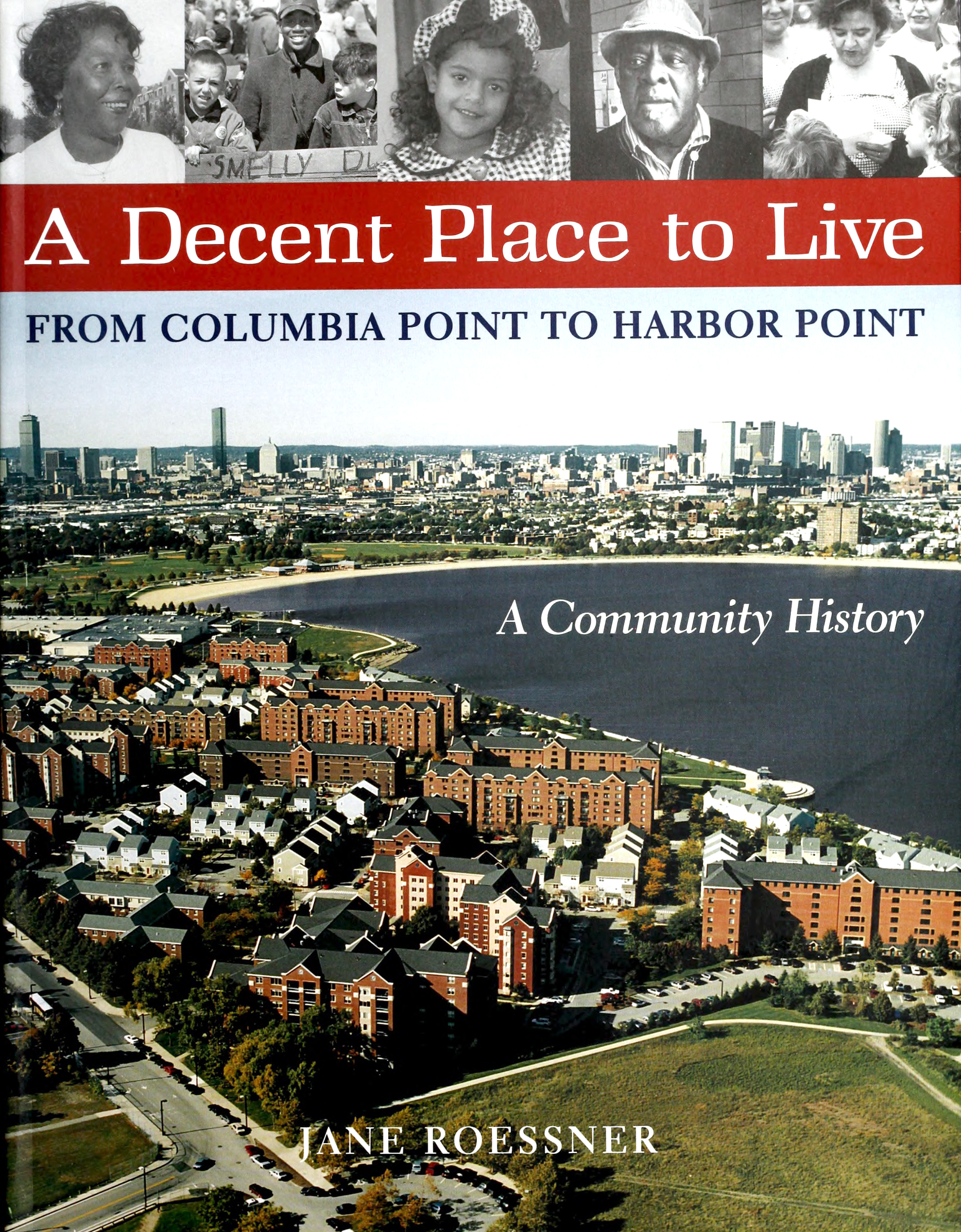
A Decent Place to Live:
From Columbia Point to Harbor Point: A Community History
Jane Roessner
Northeastern University Press, 2000
314 p.

>> Read online (via the Internet Archive)
>> Download entire publication (PDF)
>> Purchase print copy (Coming soon!)
Table of Contents:
Prologue
Part 1: Columbia Point, 1951-1962
Chapter 1: Breaking Ground at the Calf Pasture
Chapter 2: The Promise of Public Housing
Chapter 3: Ignoring the Warnings
Chapter 4: Moving In: A Tale of Two Families
Chapter 5: Building a New Community
Chapter 6: The Mothers Club
Chapter 7: Children of the Point: I
Chapter 8: Columbia Point in the Spotlight
Part 2: Columbia Point, 1962-1978
Chapter 9: “Island of Isolation”
Chapter 10: The Downhill Slide
Chapter 11: Housing of Last Resort
Chapter 12: Children of the Point: II
Chapter 13: Planning for Columbia Point
Chapter 14: Moving Out and Moving In
Chapter 15: The News from Columbia Point
Part 3: Columbia Point, 1978-1987
Chapter 16: Unlikely Partners
Chapter 17: Seeing Is Believing
Chapter 18: The Court Takes Over
Chapter 19: Receivership
Chapter 20: Shotgun Marriage
Chapter 21: Designing the New Community
Chapter 22: The Wrecking Ball
Part 4: Harbor Point, 1988-2000
Chapter 23: The Blitz
Chapter 24: Goodboy
Chapter 25: Renting and Recession
Chapter 26: Moving into Harbor Point
Chapter 27: Running the New Community
Chapter 28: Lessons from Harbor Point
Epilogue
Chronology
Bibliography / Index
Permanent URL: hdl.handle.net/2047/D20234646
Description:
When Boston’s Columbia Point housing project was built in the early 1950s on the isolated edge of Dorchester Bay, it was hailed as a noble government experiment to provide temporary housing for working-class families who had fallen on hard times. By the mid-1970s, the model community had disintegrated and become a symbol of failure, decay, crime, and danger. Today, Columbia Point has been redeveloped as Harbor Point, a privately owned and managed mixed-income, racially integrated complex that stands handsomely alongside its institutional neighbors, the John F. Kennedy Library, the Massachusetts Archives, and the University of Massachusetts at Boston.
A Decent Place to Live chronicles the rise, fall, and rebirth of Columbia Point through the voices of those who struggled to make a life there and who battled to rebuild their community. A fascinating story of people, conflict, continuity, and change, the work captures the rich yet troubled heritage of Columbia Point and celebrates the aspirations and tenacity of its residents. It reclaims a neglected piece of Boston’s history and offers important lessons for urban planners and policy makers nationwide.
Reviews:
>> “I loved this book for two reasons. First, it reclaims a forgotten chapter of Boston’s history and describes the remarkable sense of community that existed at Columbia Point during its early days. Second, it provides a blueprint for any state or city that wants to turn poorly planned and badly maintained public housing into wonderfully diverse and exciting places to live.” — Michael Dukakis, former Governor of Massachusetts and Distinguished Professor of Political Science, Northeastern University
>> “A Decent Place to Live is a fabulous piece of work. Well-written, candid and engaging, its honesty is refreshing; nothing is swept under the rug. The voices of the tenants carry the story forward, but the transformation of Columbia Point is set in a political context and the impact of government policies is explored. A valuable resource for urban planners, architects, housing policy makers, and developers.” — Hubert E. Jones, Dean Emeritus of the Boston University School of Social Work and former Special Assistant to the Chancellor for Urban Affairs, University of Massachusetts, Boston